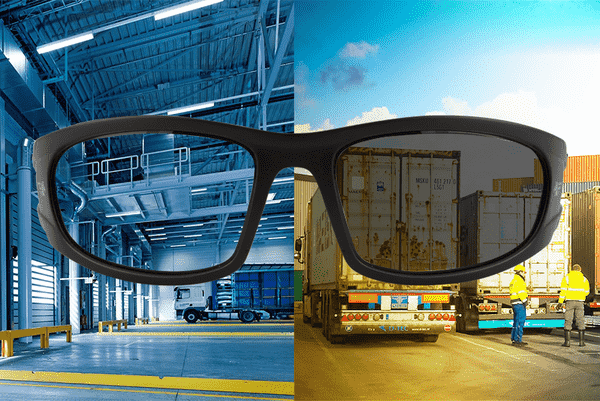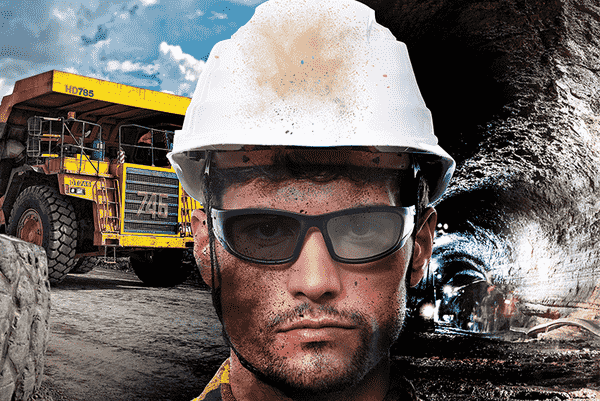Photocromatic protective glasses are a revolutionary technological advancement with a variety of advantages for the user.
Certified CE under the EN172 standard, these photocromatic glasses are equipped with special technology that detects changes in light and adjusts the shade of the protective glasses to adapt to the ambient light. In other words, the glasses quickly and automatically darken when exposed to outdoor sunlight and lighten when entering indoor spaces. This means that workers do not have to worry about carrying two pairs of glasses (clear and dark) and changing them depending on where they are throughout their workday.
Photocromatic technology is also highly advantageous for outdoor work. The intensity of the sun varies greatly throughout the day and is not the same at dawn, noon, or dusk. It also varies by season (winter, spring, summer, or fall) and even by the atmospheric conditions of the day (cloudy, muggy…). In these scenarios, photocromatic protective glasses adapt to the different light intensities, providing optimal vision at all times. These glasses also offer a high level of protection against ultraviolet (UV) rays. You can learn more about how they work here.
What are the advantages of using photocromatic glasses?

- Reduces eye fatigue from glare
- Adapts to ambient sunlight conditions
- Regulates according to environmental needs
- Protects against UV radiation
There is also the possibility of graduating your safety glasses with photocromatic lenses. The benefits of graduating your eye protection allows you to wear your usual prescription glasses without the need for over-glasses or additional glasses. With the photocromatic treatment on graduated safety glasses, you can have clear vision in both outdoor and indoor environments without compromising safety.
Industries such as construction, agro-food, mining, and aviation, among others, are industries in which choosing graduated photocromatic glasses allows for the completion of tasks in both indoor and outdoor environments without the need to change glasses depending on ambient sunlight, while preserving safety at all times.
